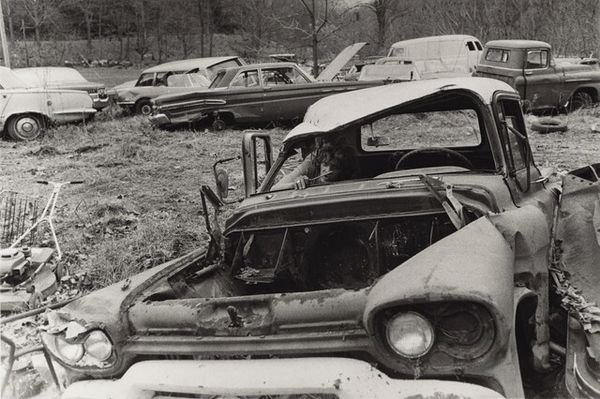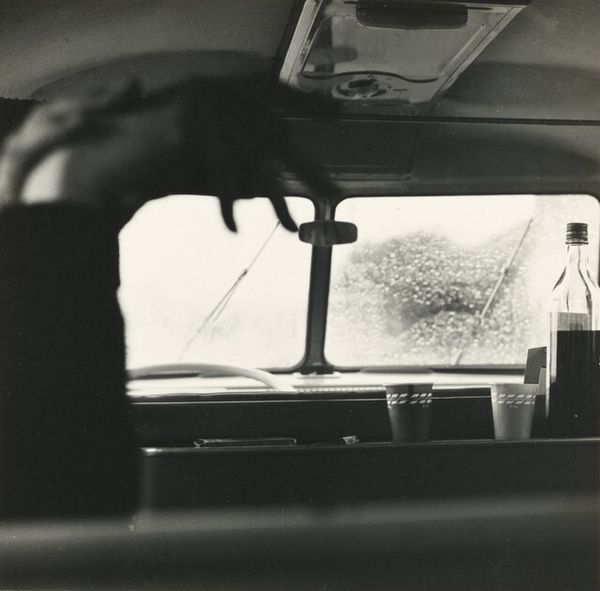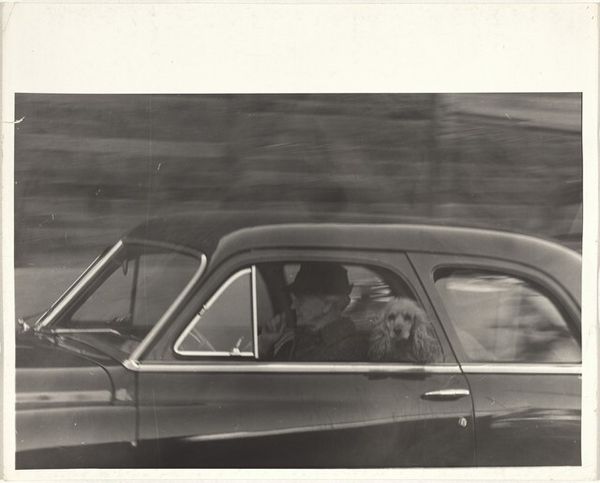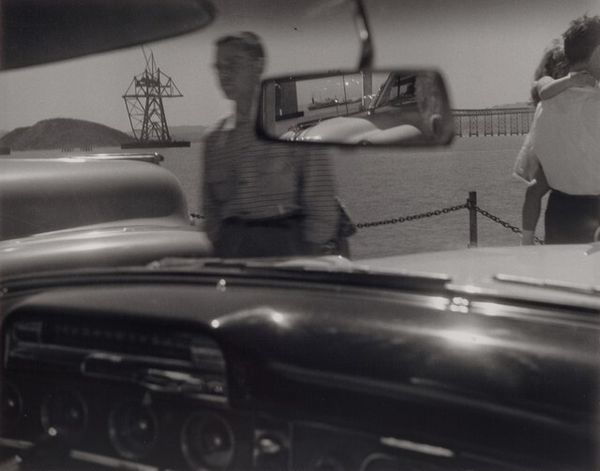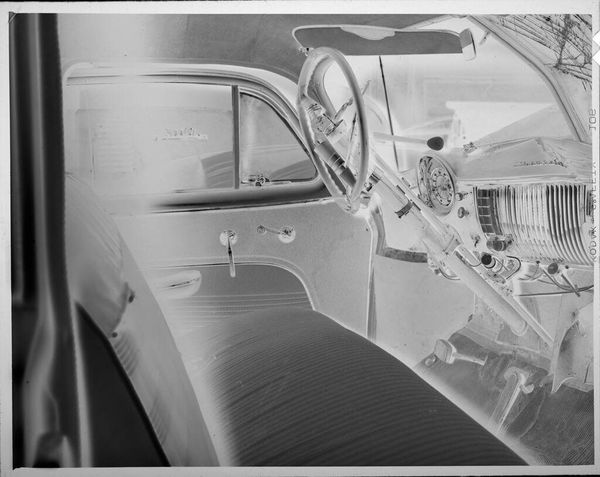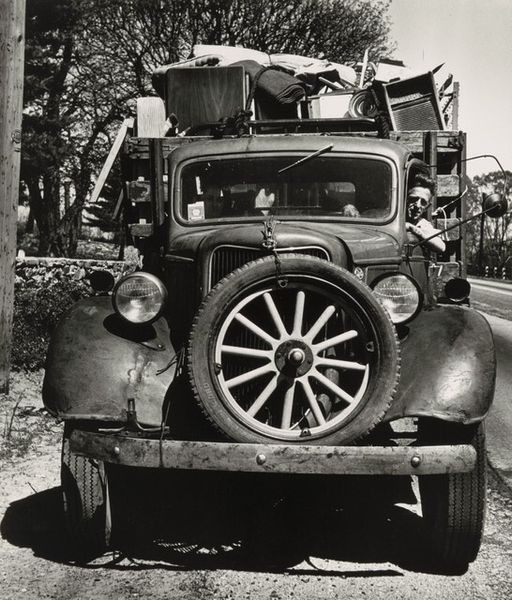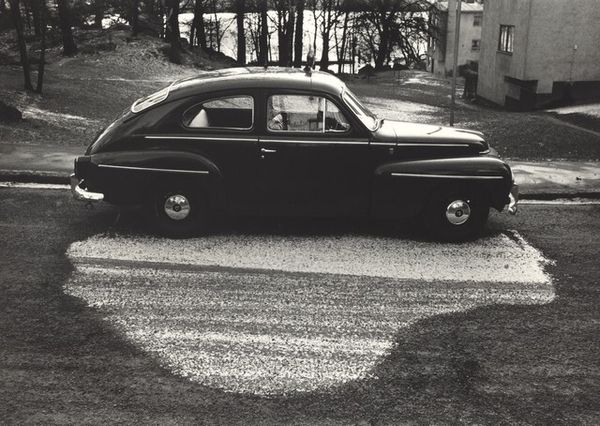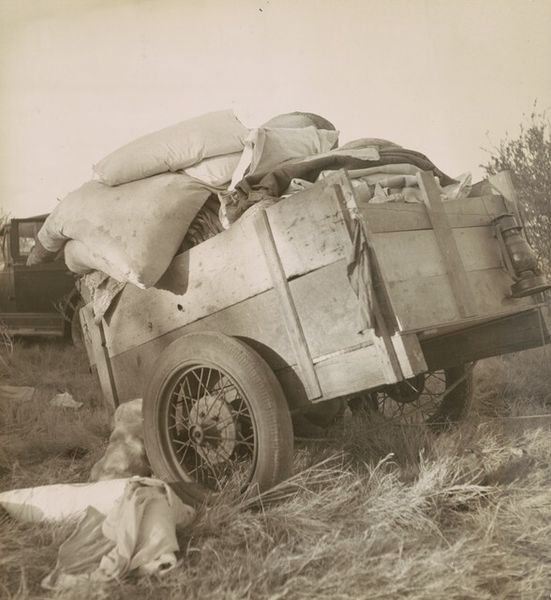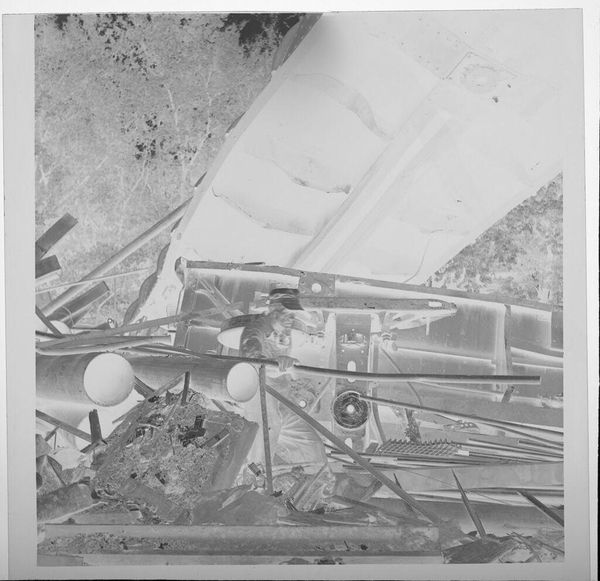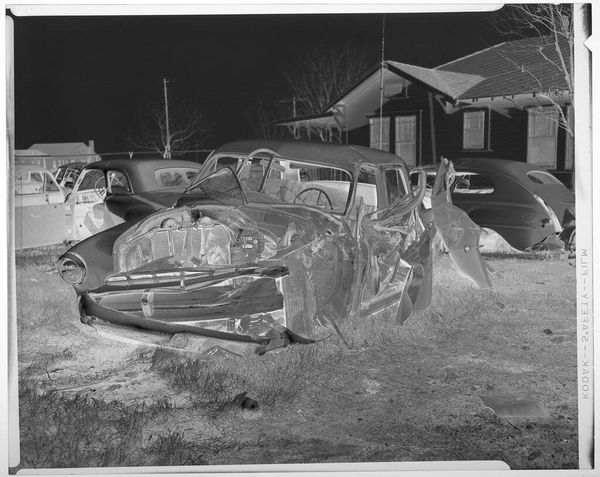
Dimensions: image: 26.1 × 33.8 cm (10 1/4 × 13 5/16 in.) sheet: 27.9 × 35.3 cm (11 × 13 7/8 in.)
Copyright: National Gallery of Art: CC0 1.0
Curator: Today, we're looking at Ralston Crawford's photograph, "Junk Car Windshield," taken in 1958. It's a stark, monochrome image. Editor: My first impression is of fragmented beauty. There’s a violence to the broken glass, but also an almost crystalline quality to the pattern. It’s oddly captivating. Curator: Crawford was deeply interested in documenting the American industrial landscape. Think factories, shipyards, and even airplane graveyards. He sought to capture a specific kind of vernacular, machine-age aesthetic. This photograph shows us the aftermath of that industrial reality: its decay. Editor: Yes, the automobile, once a symbol of American prosperity and freedom, now rendered as scrap. The shattered windshield and dented bodywork evoke themes of loss, mortality, even the fragility of the American dream. Curator: He was fascinated by the formal qualities of these subjects. You see that here in the composition. The strong geometric lines, the play of light and shadow. He reduces the car to abstract forms, commenting perhaps on how everyday life had become increasingly standardized in the postwar era. Editor: Absolutely, but it's not purely formal. Think about what cars represented in 1958: suburban expansion, the Cold War’s emphasis on technological superiority… This wrecked car speaks volumes about the potential consequences of those ideals—the ecological impact, the ever-present threat of violence, the fleeting nature of progress. Curator: Interesting that you highlight those broader cultural implications. One might also see it simply as a meditation on texture and tone within the boundaries of realistic photographic practice. Editor: I would argue there's a moral imperative not to ignore the societal narratives present here. This photograph isn't merely an exercise in aesthetic arrangement; it is an evocative tableau reflective of the complexities inherent in industrial progress. Curator: A sobering point to consider. Thank you. Editor: And thank you. This really highlights the layered messages an artist can convey within what may seem like an image of mere desolation.
Comments
No comments
Be the first to comment and join the conversation on the ultimate creative platform.
